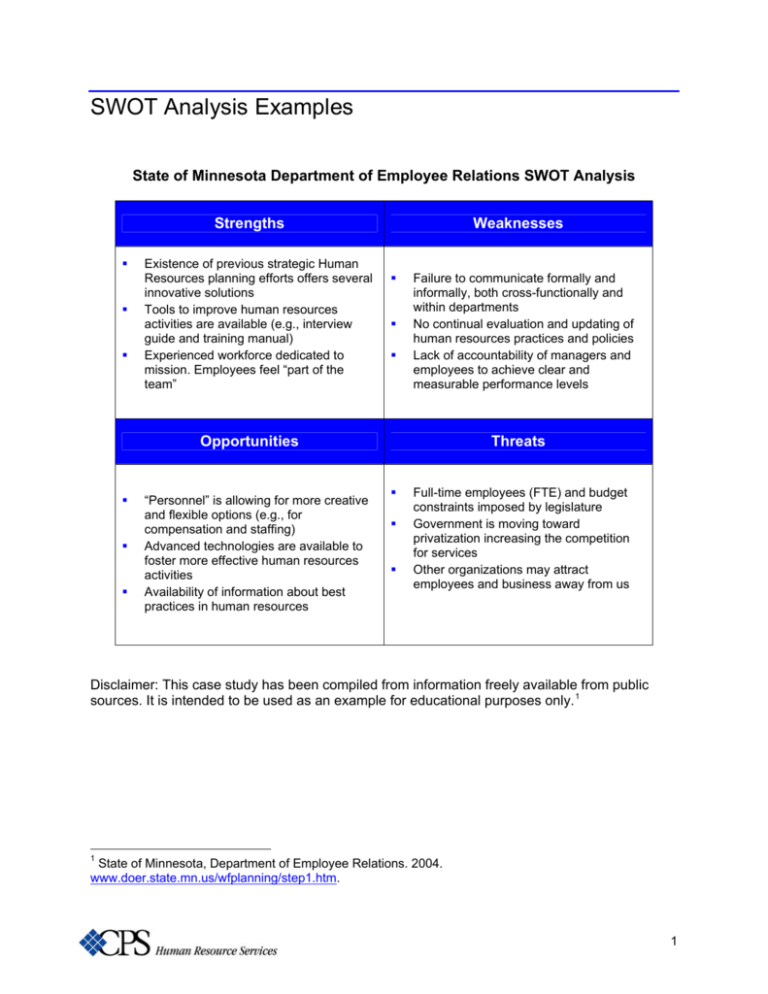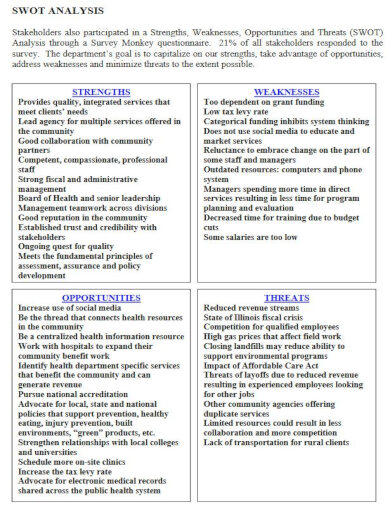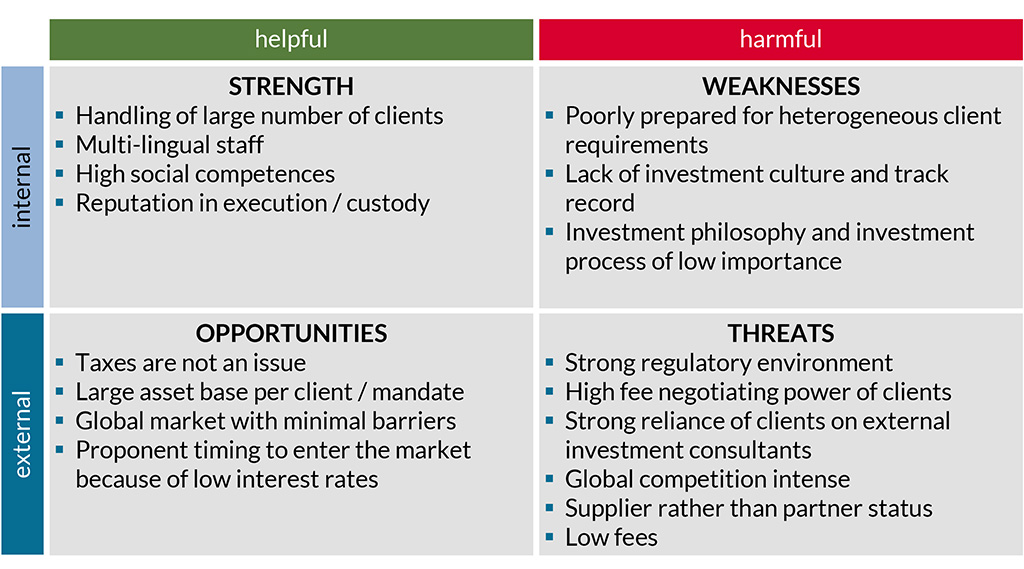

Results of the assessment are often presented in the form of a matrix, or simply as paragraphs. Threats: elements in the environment that could cause trouble for the business or project.Opportunities: elements in the environment that the business or project could exploit to its advantage.Weaknesses: characteristics that place the business or project at a disadvantage relative to others.Strengths: characteristics of the business or project that give it an advantage over others.The name is an acronym for the four components the technique examines:

SWOT has been described as a tried-and-true tool of strategic analysis, but has also been criticized for its limitations, and alternatives have been developed. Users of a SWOT analysis often ask and answer questions to generate meaningful information for each category to make the tool useful and identify their competitive advantage. It is intended to identify the internal and external factors that are favorable and unfavorable to achieving the objectives of the venture or project. This technique is designed for use in the preliminary stages of decision-making processes and can be used as a tool for evaluation of the strategic position of organizations of many kinds (for-profit enterprises, local and national governments, NGOs, etc.). Additional acronyms using the same components include TOWS and WOTS-UP. It is sometimes called situational assessment or situational analysis.

Create a chart with columns titled "Helpful" and "Harmful," and rows titled "Internal" and "External."


 0 kommentar(er)
0 kommentar(er)
